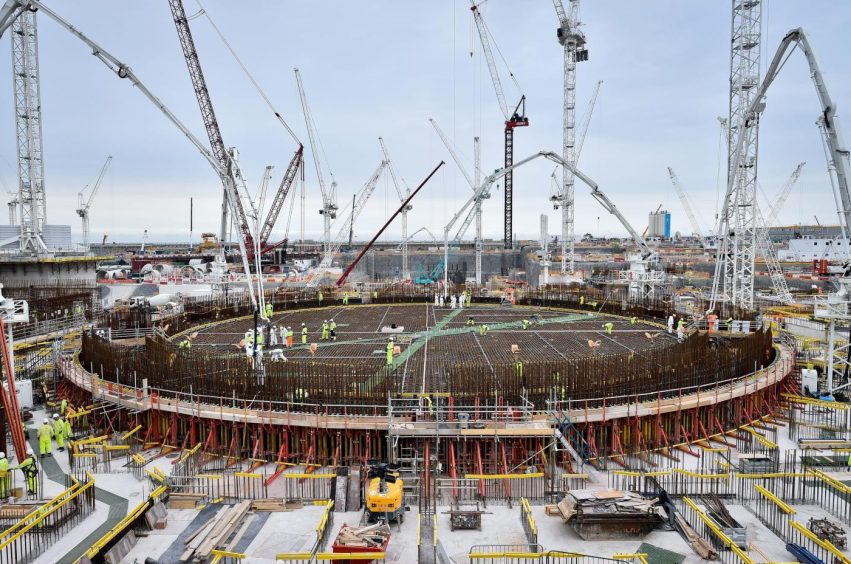
Every country is trying to figure out how to create a secure, clean and affordable energy system. So what’s the ideal low carbon energy mix for the UK?
In the second half of 2021, UK energy companies and consumers saw electricity prices reach record highs. This was due to the combination of soaring global natural gas prices and low wind speeds in the North Sea reducing offshore wind electricity output for much of the summer. Fossil fuel generation was stepped up to meet demand.
At the same time, the Net Zero Strategy set the ambitious target of all UK power generation to come from low carbon sources by 2035, subject to security of supply.[1] Over the same period, power generation also needs to nearly double to meet extra demand from the transport and heat sectors.
Difficult as they are, the current challenges may give the industry a helpful glimpse of events that may occur more frequently in the future. They provide an opportunity to pause and reflect and question whether the current range of scenarios to replace fossil fuels are robust enough. Do they ensure energy security at affordable prices to customers in times as extreme as in the course of 2021?
Renewable power generation is set to increase significantly. In scenarios that meet the net zero target, The Future of Energy Scenarios 2021 projects the combined onshore and offshore wind and solar power generation capacity to increase five- to seven-fold by 2050. [2] This means that renewables capacity would make up somewhere between 60 and 67 per cent of total electricity generation then, up from 35 per cent in 2020.
Will the UK have sufficient energy storage?
Increased intermittent generation will require significant volumes and a selection of storage types in the future. As fossil power generation declines, excess renewable electricity will need to be generated and stored to provide enough power for seasonal swings, regular demand peaks and occasional spikes. Battery storage is hoped to meet much of this need. The Committee for Climate Change’s Balance Pathway scenario estimates that the UK will need at least 18 GW of battery storage capacity by 2035 (up from the current 1.3 GW) to support intermittent generation.[3]
However, if projections for storage volumes are based on historical demand data for daily, weekly and seasonal variations, would they provide sufficient coverage for longer spells of low wind speeds that we saw during the summer of 2021?
While batteries will undoubtedly play a key role in providing security and stability to the electricity grid, their current discharge duration capability is limited to minutes or potentially hours. While the vehicle-to-grid storage technology has a large potential (with the largest car batteries currently storing around 100kWh of electricity), market developments are at an early stage and may take longer than expected to mature.
The long-duration storage role is reserved for pumped hydro and hydrogen with carbon capture and storage-backed generation also providing dispatchable generation flexibility. Currently, the UK has four pumped hydro storage projects with a combined 4 GW capacity.[4] While projections would like this capacity to double by 2050, developers argue that building pumped hydro facilities is costly and takes time, and the lack of current energy market mechanisms does not help attract investors.
Hydrogen is another possibility for long-term electricity storage. However, it will be one of the more expensive options until there is sufficient volume of excess electricity, large and low-cost geological storage, and hydrogen-ready power generation available.
Large capacity increases are also planned in interconnectors, which respond to price signals between the UK and European Union countries. While overall these will support UK energy security, on occasion electricity could flow from the UK to connecting countries depending on the price levels at a given time.
Will demand side response make much of a difference? Possibly, when combining with distributed battery storage and vehicle-to-grid charging, but deployment has been slow and public behaviours will need to change.
Is the UK planning enough nuclear?
Should the future energy mix include a higher proportion of non-intermittent low carbon sources such as nuclear in baseload generation and flexible thermal generation such as natural gas with carbon capture and storage – despite them being more costly than intermittent generation on a MWh basis? The future of nuclear power is pivoting on the question of funding. While this crucial question is debated, six of the seven currently operational nuclear stations are retiring before the end of 2030. The only plant under construction, Hinkley Point C, will replace less than half of the capacity due to be decommissioned, leaving a gap in low carbon, baseload, non-intermittent generation capacity. Is the UK planning progressing enough for timely investments in new, small and advanced modular reactors to make up for that gap?
Lots of questions and the need for debate is clear
Does the UK need significantly larger storage capacity than previously planned to support the system through potential periods of low renewable generation as dispatchable fossil fuel generation is phased out? What will replace the huge volumes of renewable generation when the wind doesn’t blow on a cold and dark winter’s evening?
Should the UK establish market mechanisms to stimulate investment into longer-term storage mechanisms as well?
But then, will the combination of intermittent renewable generation and larger storage capacity still be more cost effective than building additional nuclear power stations?
Should assessing the role of nuclear power generation also include its potential in hydrogen generation (that in turn can support decarbonisation in industry and transport) as well as heat?
The Net Zero Strategy starts to set out the framework for many of these questions and possible scenarios. There are no easy answers, but it’s time for the private and public sectors to debate and collaborate to achieve our 2050 net zero ambition.
[1]
https://www.gov.uk/government/publications/net-zero-strategy
[2] National Grid – Future of Energy Scenarios 2021, Data Workbook, SV22.
[3]
https://www.theccc.org.uk/wp-content/uploads/2020/12/The-Sixth-Carbon-Budget-The-UKs-path-to-Net-Zero.pdf
[4]
https://www.bbc.co.uk/news/uk-scotland-highlands-islands-57510870
Recommended for you
